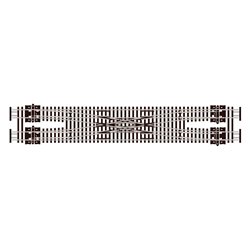Whether you're planning your first layout in N gauge or thinking of making the switch from OO, you might be wondering...
No products
Product successfully added to your shopping cart
There are 0 items in your cart. There is 1 item in your cart.
Search Tips
Where would I use a scissors crossing on my layout?
A scissors crossing is a type of track junction that allows trains to cross over one another without disrupting traffic flow. Typically, a scissors crossing is used in layouts where two or more tracks intersect at a single point.
A scissors crossing is formed by a diamond-shaped crossing that is positioned in such a way as to allow trains to cross over one another without interfering with other trains. The crossing is named after the appearance of the rails, which resemble a pair of scissors when viewed from above.
One common use of a scissors crossing is at the entrance to a railway station. This allows trains to enter and exit the station without interfering with other trains on the main line. Another common use is at a junction where two or more tracks converge. This allows trains to switch from one track to another without disrupting the flow of other trains on the layout. It is a compact arrangement which makes it especially useful in busy environments where space is at a premium.
The placement of a scissors crossing on a layout will depend on the specific needs and requirements of the modeller. Generally, it is placed in areas where trains need to cross over one another or switch tracks without disrupting the flow of other trains on the layout.
Overall, the scissors crossing is a useful tool for modellers who want to create complex layouts with multiple tracks and junctions. By allowing trains to cross over one another without disrupting the flow of traffic, it can enhance the realism and functionality of a model railway layout.
Click here to receive the tips weekly in your mailbox. You can unsubscribe at any time.








